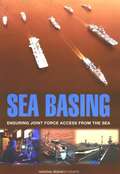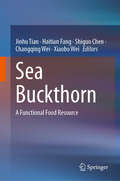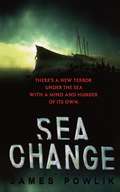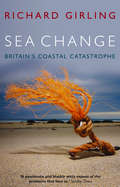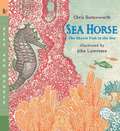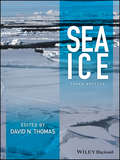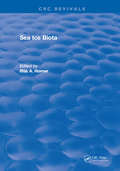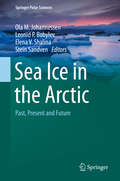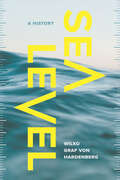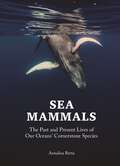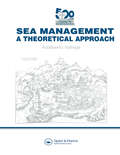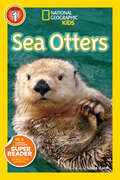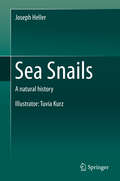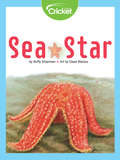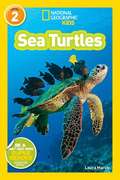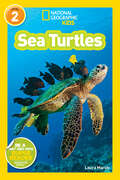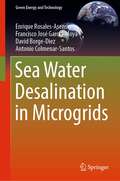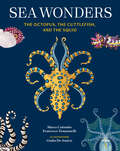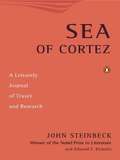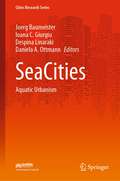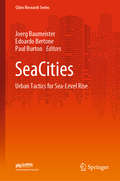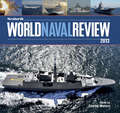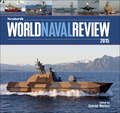- Table View
- List View
Sea Basing: Ensuring Joint Force Access From The Sea
by National Research Council of the National AcademiesThe availability of land bases from which to launch and maintain military, diplomatic, and humanitarian relief operations is becoming increasingly uncertain because of physical or political constraints. The ability to operate from a sea base, therefore, is likely to become more and more important. The Defense Science Board recently concluded that Sea Basing will be a critical future joint military capability and that DOD should proceed to develop such capability. Following the DSB report, the Navy requested that the National Research Council (NRC) convene a workshop to assess the science and technology base, both inside and outside the Navy, for developing Sea Basing and to identify R&D for supporting future concepts. This report of the workshop includes an examination of Sea Basing operational concepts; ship and aircraft technology available to make Sea Basing work; and issues involved in creating the sea base as a joint system of systems.
Sea Buckthorn: A Functional Food Resource
by Jinhu Tian Haitian Fang Shiguo Chen Changqing Wei Xiaobo WeiThis book presents the knowledge on the sea buckthorn chemistry and nutrition, including the identification, analysis and application of bioactive chemical components of sea buckthorn, the functional characteristics of sea buckthorn, and the commercial products from Sea buckthorn. The authors provide a detailed description of the sea buckthorn bioactive components as well as their role during processing and as a nutrition or function supplement. Particularly, a novel application of sea buckthorn protein, flavonoids, phenolics, polysaccharides, and the next generation of healthy sea buckthorn products is summarized. This book provides the most recent information and state-of-the-art technology. It is useful for students, researchers, and technologists working in the area of food, nutrition, engineering, and others who are interested in sea buckthorn.
Sea Change
by James PowlikFrom the Publisher In the cold waters of the Pacific Northwest, two fishermen are the first to feel the heat. Then a young girl, playing innocently by the seashore - before dying an agonizing death. Now the media have a story. Reporters, scientists, and government officials are descending on the coastline, searching for a killer in the water. And renegade oceanographer Brock Garner is at the center of the storm. He wants to know why he's finding dead zones in the Pacific and why his best friend's heart stopped after he examined ravaged sea lions on a beach. Dr. Ellie Bridges, on duty when the little girl died, has questions of her own. Thrown together in the chaos, Brock and Ellie are about to discover some disturbing truths, about a catastrophe of unimaginable proportions that is growing. Gathering strength. And moving - unless they can stop it - south toward a new victim, Seattle.. "In this novel real-life oceanographer James Powlik creates a chilling scenario that isn't just plausible it already exists. Because between nature's wrath and man's worst secrets, a deadly terror has been born at sea. And now the sea will bring it home.
Sea Change: Britain's Coastal Catastrophe
by Richard GirlingWe have a special relationship with the sea. It is the single most powerful driver of our economy, our lifestyle and our politics. It affects what we eat, how we use the land, how we relate to our neighbours, how we travel, even the thickness of our coats. Yet we go on treating it, with childlike faith and unreason, as if we imagine it to be infinitely resourceful and endlessly forgiving. Sea Change addresses such issues as pollution by sewage, nuclear waste and dumping at sea; extinction of fish stocks; destruction of marine environment, impacts of climate change, coastal erosion and rising sea levels; decline of our seaside resorts; the failure of the 'integrated transport policy';and smuggling. In each case Girling questions: how did the situation arise? What are the consequences? What should be done? And what will happen when we fail? His unique voice blends horror, humour and 'just fancy that'; sifting for solutions in the sands, he is utterly compelling, entertaining and inspirational.
Sea Horse: The Shyest Fish in the Sea (Read And Wonder)
by Christine Butterworth John LawrenceDive into the warm ocean and swim around amid the coral and waving sea grass. Do you see an eye like a small black bead peering out at you? Linger for a while and discover the secrets of the sea horse - one of the shyest fish in the sea. With a head like a horse, a tail like a monkey, and a pouch like a kangaroo, the sea horse acts like a chameleon, changing color to ward off danger or to show that he and his mate are a lifelong pair. Watch their fascinating mating dance, as the two of them twine their tails together and twirl, before she places her eggs in his pouch to be born. Could there be a more intriguing creature of the sea? <P><P>Lexile Measure: 930L
Sea Ice
by David N. ThomasOver the past 20 years the study of the frozen Arctic and Southern Oceans and sub-arctic seas has progressed at a remarkable pace. This third edition of Sea Ice gives insight into the very latest understanding of the how sea ice is formed, how we measure (and model) its extent, the biology that lives within and associated with sea ice and the effect of climate change on its distribution. How sea ice influences the oceanography of underlying waters and the influences that sea ice has on humans living in Arctic regions are also discussed. Featuring twelve new chapters, this edition follows two previous editions (2001 and 2010), and the need for this latest update exhibits just how rapidly the science of sea ice is developing. The 27 chapters are written by a team of more than 50 of the worlds’ leading experts in their fields. These combine to make the book the most comprehensive introduction to the physics, chemistry, biology and geology of sea ice that there is. This third edition of Sea Ice will be a key resource for all policy makers, researchers and students who work with the frozen oceans and seas.
Sea Ice Biota
by HornerInvestigators from a number of countries have been studying the ice community and experimental information is now available from a number of geographic areas. This includes ecological data as well as community and species specific physiological information. The literature on ice biota is scattered, being found in scientific journals, research and technical reports, symposia proceedings, M. S. theses and Ph.D. dissertations, meeting abstracts, and books on topics ranging from algal ecology to regional oceanography. Much of the material has not been published and some is available only in proprietry or difficult to obtain reports. The purpose of this book is to bring the data and references together in one place and to provide state of the art information on these little known, but ecologically important, polar communities.
Sea Ice in the Arctic: Past, Present and Future (Springer Polar Sciences)
by Ola M. Johannessen Leonid P. Bobylev Elena V. Shalina Stein SandvenThis book provides in-depth information about the sea ice in the Arctic at scales from paleoenvironmental variability to more contemporary changes during the past and present centuries. The book is based on several decades of research related to sea ice in the Arctic and its variability, sea ice process studies as well as implications of the sea ice variability on human activities.The chapters provide an extensive overview of the research results related to sea ice in the Arctic at paleo-scales to more resent scales of variations as well as projections for changes during the 21st century.The authors have pioneered the satellite remote sensing monitoring of sea ice and used other monitoring data in order to study, monitor and model sea ice and its processes.
Sea Level: A History (Oceans in Depth)
by Wilko Graf HardenbergTraces a commonplace average—sea level—from its origins in charting land to its emergence as a symbol of global warming. News reports warn of rising sea levels spurred by climate change. Waters inch ever higher, disrupting delicate ecosystems and threatening island and coastal communities. The baseline for these measurements—sea level—may seem unremarkable, a long-familiar zero point for altitude. But as Wilko Graf von Hardenberg reveals, the history of defining and measuring sea level is intertwined with national ambitions, commercial concerns, and shifting relationships between people and the ocean. Sea Level provides a detailed and innovative account of how mean sea level was first defined, how it became the prime reference point for surveying and cartography, and how it emerged as a powerful mark of humanity’s impact on the earth. With Hardenberg as our guide, we traverse the muddy spaces of Venice and Amsterdam, the coasts of the Baltic Sea, the Panama and Suez canals, and the Himalayan foothills. Born out of Enlightenment studies of physics and quantification, sea level became key to state-sponsored public works, colonial expansion, Cold War development of satellite technologies, and recognizing the climate crisis. Mean sea level, Hardenberg reveals, is not a natural occurrence—it has always been contingent, the product of people, places, politics, and evolving technologies. As global warming transforms the globe, Hardenberg reminds us that a holistic understanding of the ocean and its changes requires a multiplicity of reference points. A fascinating story that revises our assumptions about land and ocean alike, Sea Level calls for a more nuanced understanding of this baseline, one that allows for new methods and interpretations as we navigate an era of unstable seas.
Sea Mammals: The Past and Present Lives of Our Oceans’ Cornerstone Species
by Annalisa BertaA richly illustrated introduction to the world’s living and extinct sea mammalsFrom the gregarious sea otter and playful dolphins to the sociable narwhal and iconic polar bear, sea mammals are a large, diverse, and increasingly precious group. In this book, Annalisa Berta, a leading expert on sea mammals and their evolution, presents an engaging and richly illustrated introduction to past and present species of these remarkable creatures, from the blue whale and the northern fur seal to the extinct giant sperm whale, aquatic sloth, and walking sea cow.The book features more than 50 individual species profiles, themed chapters, stunning photographs, and specially commissioned paleo-illustrations of extinct species. It presents detailed accounts of these mammals’ evolutionary path, anatomy, behavior, habitats, and conservation. And because these are key species that complete many food chains and have the widest influence of all sea life, the book also offers insights into a broad variety of marine worlds today and in the future.
Sea Management: A theoretical approach
by Adalberto VallegaThis book has been conceived with the aim of contributing to the International Conference on Ocean Management in Global Change [Genoa, June 22-26, 1992] and to the ocean sciences' debate on the conceptual framework and targets of sea management.
Sea Otters (National Geographic Kids Readers)
by Laura MarshIn this level 1 reader, young readers will explore the fun-filled world of lovable otters. Follow these playful critters through their aquatic habitats, learn how otters raise their young, and discover their curious and social natures. Beautiful photos and carefully leveled text make this book perfect for reading aloud or for independent reading.
Sea Snails
by Joseph HellerThis richly illustrated book presents the diversity and natural history of sea snail groups. By integrating aspects of morphology, ecology, evolution and behaviour, it describes how each group copes with problems of defence, locomotion, nutrition, reproduction and embryonic development. First come general characteristics of the Mollusca, to which snails belong; and next, characteristics by which snails (Gastropoda) differ from other molluscs. Then a broad, panoramic view of all major sea snail groups, from the primitive to the more advanced, is presented, including both the more abundant and some remote ones of special interest. In detailing primitive sea snails, first limpets (Patellogastropoda) are described, followed by brush snails (Vetigastropoda: top-shells, turbans and allies) and nerites (Neritimorpha), a small group with remarkably high variation in shell colour and in habitats. In looking at advanced-snails (Caenogastropoda), it details the herbivorous grazers and filter-feeders and the many voracious predators, some which use venomous darts. The book also covers sea slugs (Opisthobranchia), which have shifted from mechanical to chemical defence; some are herbivores, some use their food to harness solar energy, others are predators that gain stinging cells and poisonous compounds from their food. In addition, readers will learn about aspects of sea snails in human culture, including use as sacred artefacts and objects of magic and money, as a source of the royal and sacred dyes of purple and blue and as holy ceremonial trumpets. The text, in which scientific terms are accompanied by parallel common ones, is accompanied by over 200 illustrations (mostly in colour). This comprehensive, insightful portrait of sea snails will appeal to marine biologists, zoology lecturers and students, biology teachers, field-school instructors, nature reserve wardens, amateur naturalists, as well as to lecturers and learners of human culture.
Sea Star
by Buffy SilvermanHave you ever seen a sea star before? They are the pretty star-shaped creatures that hang out at the bottom of the ocean. Learn about Sea Star as she finds and eats her favorite food, moves around the ocean floor, and regenerates her broken arm! Learn about these strange invertebrates and the unique lives they live.
Sea Turtles (National Geographic Kids Readers #Level 2)
by Laura Marsh National Geographic Kids StaffWho could resist celebrating sea turtles? They may seem like lazy ocean reptiles drifting with the oceans’ currents, but they are actually long-distance swimmers that spend their entire lives searching for food and a mate. What’s more, they come with their own built-in GPS, returning to the exact beach where they were born to lay their own eggs.
Sea Turtles (National Geographic Kids Readers)
by Laura MarshWho could resist celebrating sea turtles? They may seem like lazy ocean reptiles drifting with the oceans&’ currents, but they are actually long-distance swimmers that spend their entire lives searching for food and a mate. What&’s more, they come with their own built-in GPS, returning to the exact beach where they were born to lay their own eggs. Kids will learn all about these tranquil and mysterious animals through brilliant photography and illustrations, plus the trusted and distinctive content you love from NG Kids!
Sea Water Desalination in Microgrids (Green Energy and Technology)
by Antonio Colmenar-Santos Enrique Rosales-Asensio David Borge-Diez Francisco José García-MoyaThis book investigates the sustainability performance of system that use microgrids in desalination processes. Climate change may be especially dramatic in its effects on island environments. In these environments, aquifers and wells could become over exploited resulting the use of desalination plans. The synergies between water, energy, and food sectors have been identified as vital in achieving the United Nation’s Sustainable Development Goals.The book explores desalination and microgrids technically as well the economic and legal aspects that must be considered in order explore their techno-economic feasibility - analyzing how to improve the desalination process, proposing a method to locate and size a microgrid. Other synergies between the water, energy, and food system are discussed and the benefits to society that might result in these systems. Also, the lessons learned are highlighted in the context of how they may apply to other sustainable enterprises.
Sea Wonders: The Octopus, the Cuttlefish, and the Squid
by Francesco Tomasinelli Marco ColomboExplore the world of extraordinary marine creatures in this beautifully illustrated guide to thirty species of octopuses, cuttlefish, and squids.In Sea Wonders, discover the remarkable characteristics of cephalopods, enigmatic sea creatures with arms directly attached to their heads, who are masters of survival and transformation. Thirty species are collected in this fascinating guidebook, detailing their most surprising habits and abilities: Enterprising, resourceful, and intelligent, they know how to solve problems and can use objects as tools. They are notorious for escaping from aquaria. They can recognize people and can even feel dislike for some! Some species, such as the orchid cuttlefish, are among the most colorful organisms in the oceans. Others, like the blue-ringed octopus, are famous for their lethal bite. Some of the world’s largest invertebrates are cephalopods—including giant squids the size of a bus—about which very little research exists to this day. The first half of the book contains fifty gorgeously detailed and realistic illustrations and delves into the species' main characteristics and the secrets of their underwater world. The second half features specimen cards with scientific information and fun facts for easy reference.REMARKABLY BRIGHT CREATURES: Cephalopods are fascinating creatures increasingly understood as intelligent, sophisticated, and resourceful animals. Their unexpected cognitive capacities encourage us to reflect on how we relate to the natural world, making it clear that it is not only mammals and birds who deserve our empathy. THOROUGHLY RESEARCHED SCIENTIFIC FACTS: Various species of octopuses, squids, and cuttlefish are explored in these pages, with in-depth information on habitats and habits as well as fun facts. FOREWORD BY OSCAR-WINNING FILMMAKER: Craig Foster, producer of the 2020 Academy Award–winning documentary My Octopus Teacher is a naturalist, ocean explorer, and author of Underwater Wild: My Octopus Teacher's Extraordinary World.Perfect for: Anyone with an interest in marine creatures and the undersea world Birthday, housewarming, or seasonal gift for nature lovers Oceanography and marine biology students, teachers, and professionals Fans of animal and nature books like Amphibious Soul, Oceanology: The Secrets of the Sea Revealed, and The Soul of an Octopus
Sea of Cortez: A Leisurely Journal of Travel and Research
by John Steinbeck Edward F. RickettsIn the two years after the 1939 publication of Steinbeck’s masterful The Grapes of Wrath, Steinbeck and his novel increasingly became the center of intense controversy and censorship. In search of a respite from the national stage, Steinbeck and his close friend, biologist Ed Ricketts, embarked on a month long marine specimen-collecting expedition in the Gulf of California, which resulted in their collaboration on the Sea of Cortez.
Sea of Cortez: A Leisurely Journal of Travel and Research
by John Steinbeck Edward F. RickettsThe collaboration of two friends-one a novelist, one a novelist, one a marine biologist-produced a volume in which fascinating popular science is woven into a narrative of man's dreams, his ideals, and his accomplishments through the centuries. Sea of Cortez is one of those rare books that are all things to all readers. Actually the record of a brief collecting expedition in the lonely GUlf of California, it will be science to the scientist, philosophy to the philosopher, and to the average man an adventure in living and thinking.
SeaCities: Aquatic Urbanism (Cities Research Series)
by Joerg Baumeister Daniela A. Ottmann Ioana C. Giurgiu Despina LinarakiThis book highlights the research outcome of Cities Research Institute's SeaCities group at Griffith University and a panel with the same title which took place at the World Expo in Dubai 2021/22 supported by the UN. It reflects on topics which are relevant for a future aquatic urbanism like the evolution of a taxonomy for aquatic urbanism, island and ecological wetland development, the planning aspects of seascapes, as well as drivers for floating communities and aquacultural urbanism. The book broadens the perspective of the previous book "SeaCities: Urban Tactics for Sea-Level Rise" published in 2021 from a terrestrial towards an amphibious and aquatic understanding of future city development.
SeaCities: Urban Tactics for Sea-Level Rise (Cities Research Series)
by Joerg Baumeister Edoardo Bertone Paul BurtonThis book presents and discusses a strategy which includes four approaches to dealing with the risk of sea-level rise and other water hazards. It also offers opportunities for cities to explore urban extensions such as marine estates, aquatic food production systems, new sea related industries, maritime transport developments, new oceanic tourist attractions, and the designation of additional coastal ecological zones. The urban interface between Sea and Cities generates, therefore, both burning issues and valuable opportunities and raises the question of whether it is possible to solve the former by exploiting the latter?
Seaforth World Naval Review 2013
by Conrad Waters&“The 2013 edition . . . includes four articles on significant ships, respectively; French Navy, US Coast Guard, German Navy and Indian Navy.&”—Firetrench Reviews Launched in 2009, this annual has rapidly established a reputation as an authoritative but affordable summary of all that has happened in the naval world in the previous twelve months. It combines the standing features of regional surveys with one-off major articles on noteworthy new ships and other important developments. Besides the latest warship projects, it also looks at wider issues of importance to navies, such as aviation and electronics, and calls on expertise from around the globe to give a balanced picture of what is going on and to interpret its significance. Special features for the 2013 edition include in-depth studies of the navies of Italy and Ireland, plus analyses of significant new warship classes: the French Aquitaine class frigates, Indian Shivalik class Project 17 frigates, German Braunschweig class corvettes, and US Bertholf class national security cutters. Intended to make interesting reading as well as providing authoritative reference, there is a strong visual emphasis, including specially commissioned drawings and the most recently released photographs and artists&’ impressions. This annual has become &“a must for those wishing to keep up with world naval affairs&” (Scuttlebutt).
Seaforth World Naval Review 2015: 2015
by Conrad WatersThe &“profusely illustrated&” yearly military reference that features world fleet reviews, significant ship developments, and technological advancements (Ships Monthly). Now in its seventh year, this annual has established an international reputation as an authoritative but affordable summary of all that has happened in the naval world in the previous twelve months. It combines regional surveys with one-off major articles on noteworthy new ships and other important developments. Besides the latest warship projects, it also looks at wider issues of importance to navies, such as aviation and electronics, and calls on expertise from around the globe to give a balanced picture of what is going on and to interpret its significance. The 2015 edition looks in detail at the French Navy and the Bangladesh and Myanmar navies, while significant ships include the Montford Point class mobile landing platforms, the Samuel Beckett offshore patrol vessels, and the Skjold class fast attack craft. There are technological reviews dealing with naval aviation by David Hobbs, and current mine warfare developments by Norman Friedman, while warship recycling is discussed by Ian Buxton. Intended to make interesting reading as well as providing authoritative reference, there is a strong visual emphasis, including specially commissioned drawings and the most up-to-date photographs and artists&’ impressions. For anyone with an interest in contemporary naval affairs, whether an enthusiast or a defense professional, this annual has become required reading.
